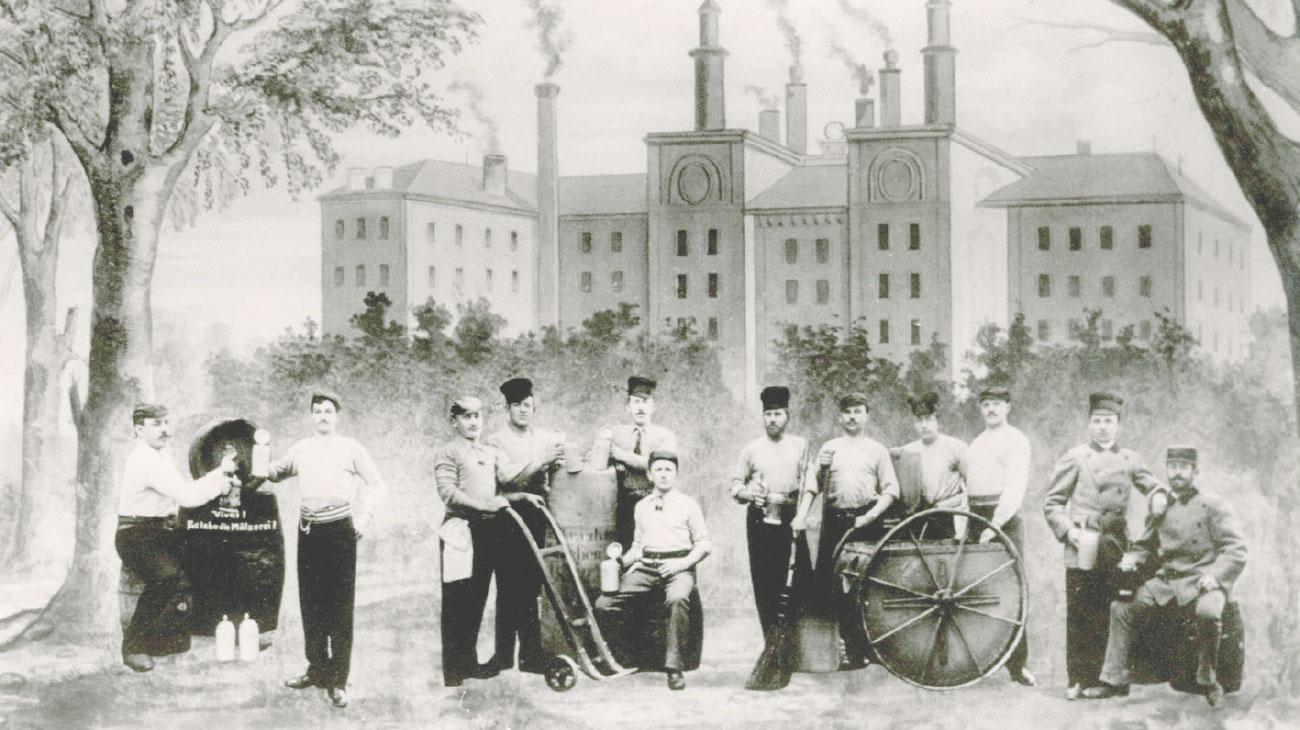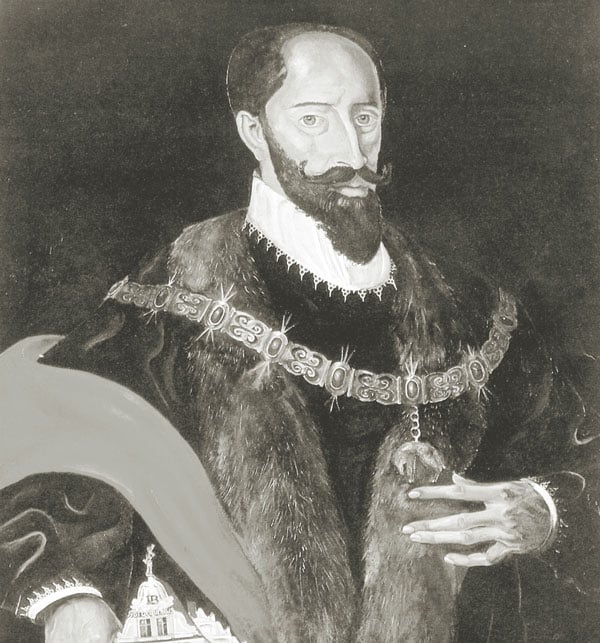
16. - 17.
century
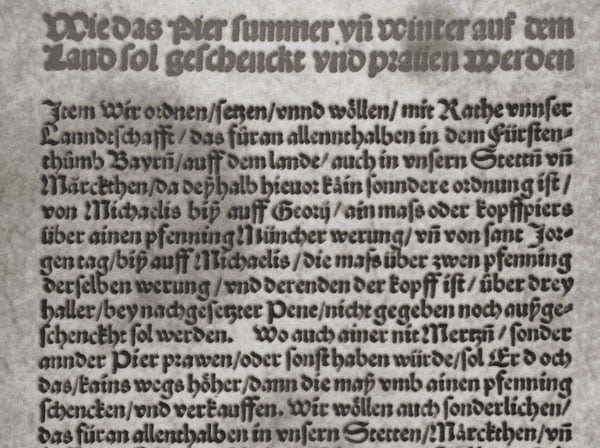
1516 – Duke William IV issues the Purity Law
Enacted in April 1516, and still the basis of the art of brewing in Germany today: The historic Beer Purity Law was proclaimed to improve the quality of the beer and protect consumers. In the provision, from the pen of William IV, Duke of Bavaria, it decrees: “that... no other ingredient shall be added to beer, only barley, hops and water shall be taken".
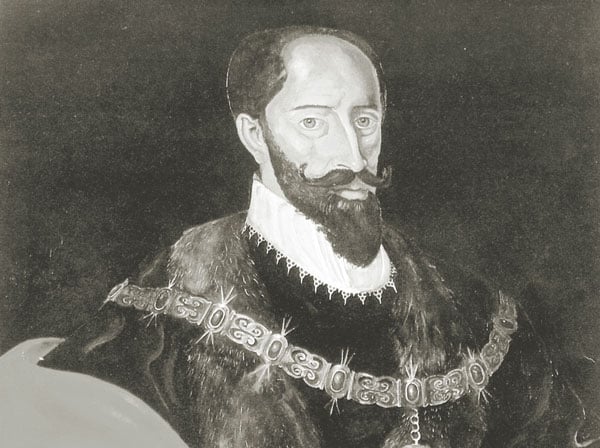
1589 - Duke Wilhelm V founds the Hofbräuhaus
Indeed! The favorite beer of the Munich Court comes at the end of the 16th century from Einbeck in Lower Saxony. The import is expensive, beer is a luxury item. Thus, Duke Wilhelm V of Bavaria and his advisers agree on the September 27, 1589, to found their own ‘brewhouse’. As planners, builders and first master brewers of the future Hofbräuhaus, they send for Heimeran Pongratz from the Benedictine monastery Geisenfeld to come to Munich.
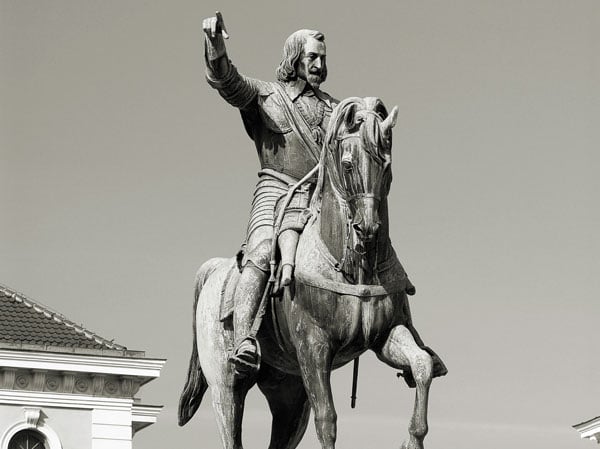
1602-1607 – Wheat beer is booming, and the brewery moves to the Platzl
Duke Maximilian I, son and successor of William V, not only has a fine palate, but also a keen sense of finance and marketing. In 1602, he secures the wheat beer monopoly and, in the following years, creates a veritable boom in wheat beer. The demand is so great that, in 1607, Maximilian outsources the wheat beer brewery to its own brewing site: To the Platzl, located in the heart of Munich, which is still the seat of the Hofbräuhaus today.
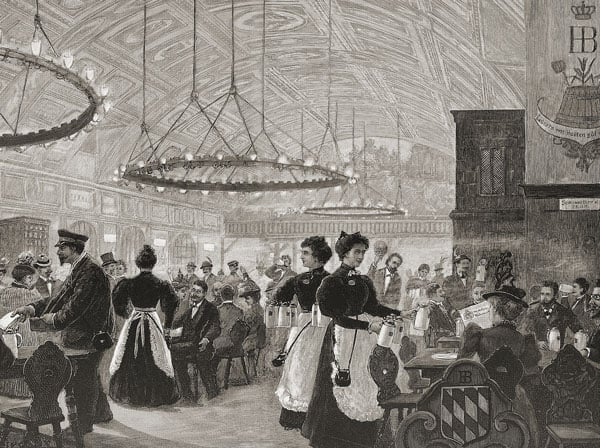
1610 – Innkeepers are allowed to publicly serve Hofbräu beer
Maximilian turns the thirst of his people into cash: From 1610, he officially allows the Munich innkeepers to purchase beer from the Ducal Hofbräuhaus and serve it publicly. At first, it is primarily officials and servants of the Court that refresh themselves with the Hofbräu ‘barley juice’, later the common folk as well – with growing enthusiasm!
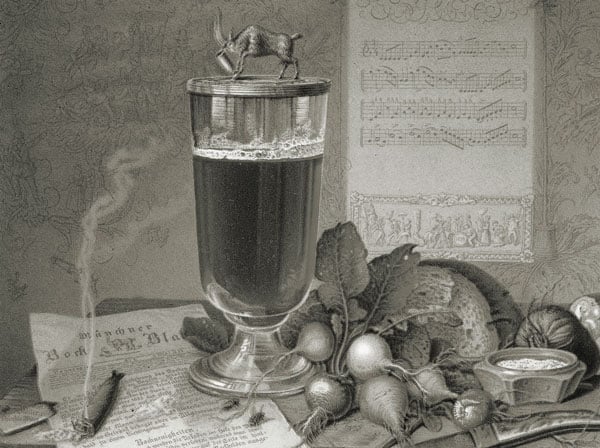
1614 – Elias Pichler 1614 creates the “Maibock”
More, more! – Since the import is expensive, brewmaster Elias Pichler, who has been specially enticed away from Einbeck, fulfils the desires of a thirsty court and invents the "Maibock". Munich’s oldest bock beer stands in the tradition of the Einbecker strong beer.
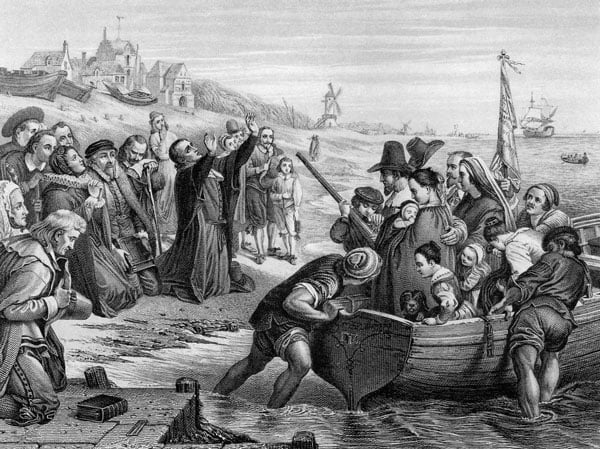
1620 – Pilgrims reach America
…and that’s what else happened in the world
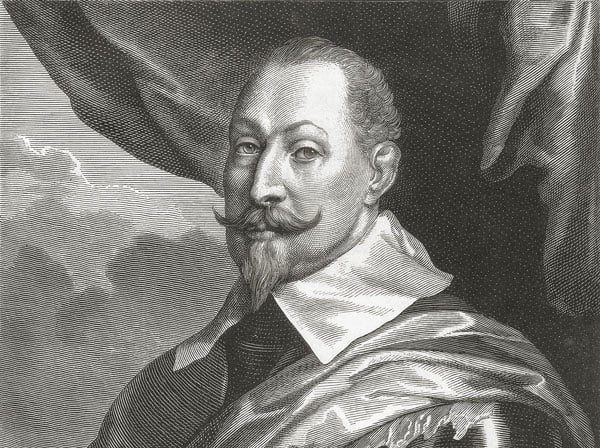
1632 – The Maibock saves the city of Munich
Beer as protection money: During the Thirty Years' War, Sweden under King Gustav Adolph occupies the city of Munich in 1632. Munich exchanges 344 buckets of Hofbräu Maibock for Sweden’s promise to refrain from plundering and pillaging the city. They kept their promise.
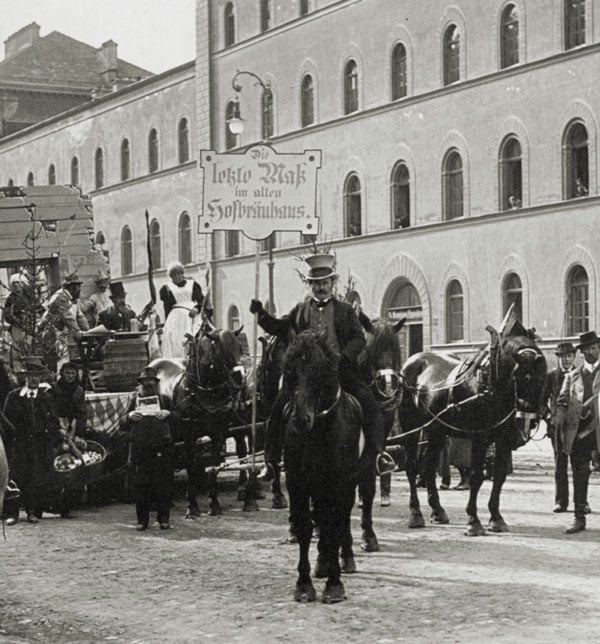
18. - 19.
century
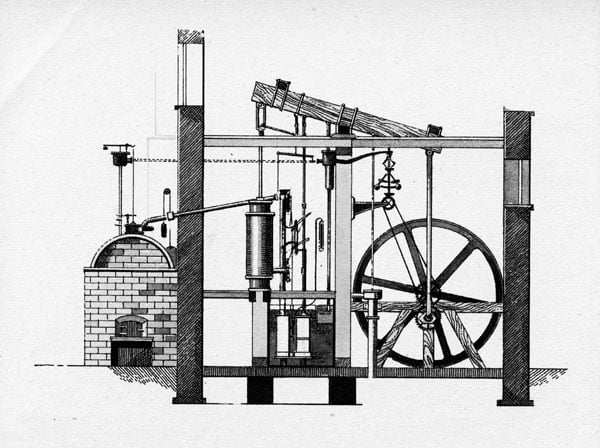
1765 – Invention of the steam engine by Watt
…and that’s what else happened in the world
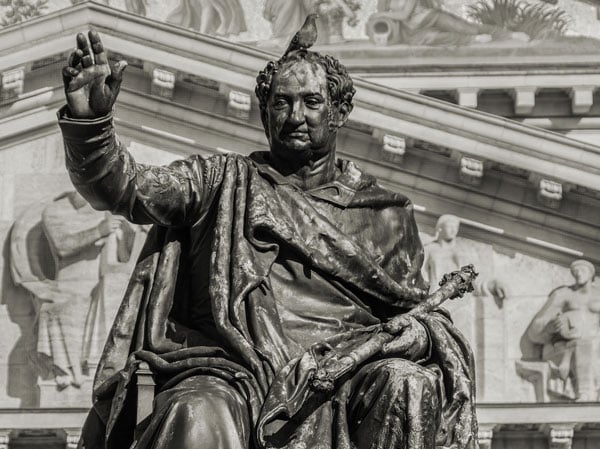
1806 – The Hofbräuhaus turns royal
The Kingdom of Bavaria forms: On January 1, 1806, Maximilian I Joseph assumes the Bavarian throne. A political change, which is also has consequences for the tradition of the Hofbräuhaus: It is turned from the Ducal into the Royal Hofbräuhaus.
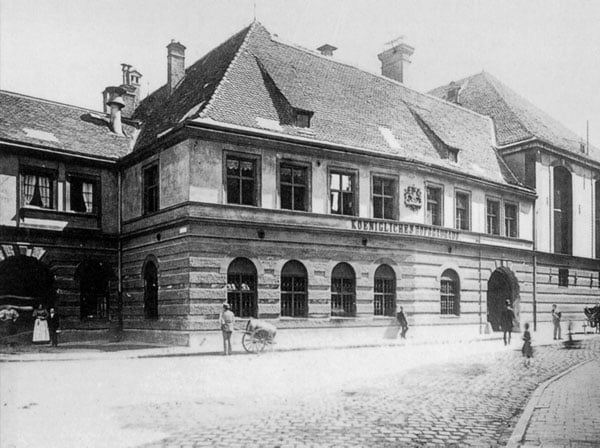
1808 – The brown beer brewery moves to the Platzl
Great demand, great shortage of space: The founding site of the Hofbräu in the "Old Court" is bursting at the seams. The Brewing Directorate relocates the brown beer brewery to the Hofbräuhaus am Platzl. To accommodate it, the “white brewery house” there is converted.
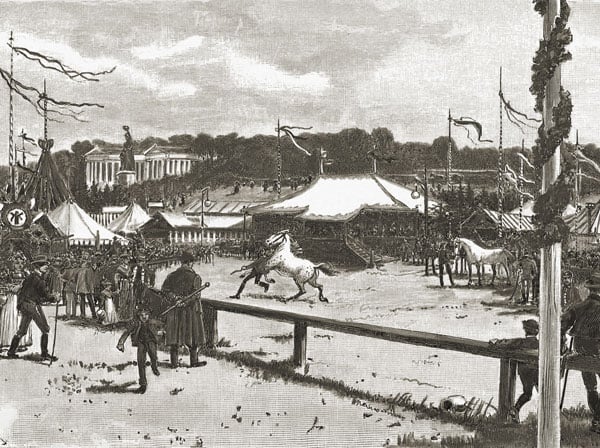
1810-1812 – The Bavarians celebrate the first Oktoberfest
A wedding of superlatives: On October 12, 1810, Crown Prince Ludwig of Bavaria marries his fiancée Therese von Sachsen-Hildburghausen. The groom's father, Maximilian I Joseph, throws a big bash – and provides for a celebration for 40,000 visitors, horse races included! It is the precursor of today's Oktoberfest. The Hofbräu beer for the Oktoberfest follows two years later.
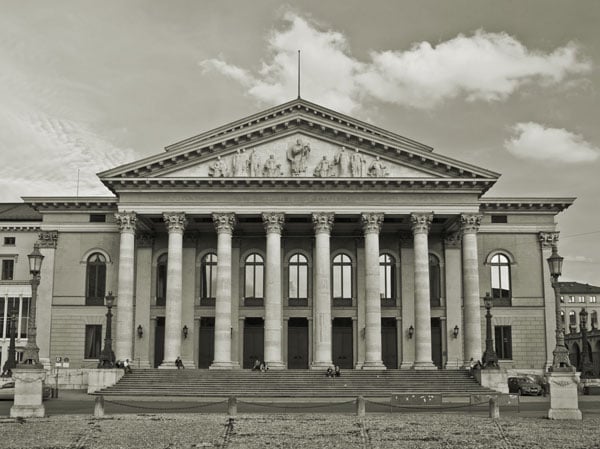
1823 – Beer is to fight fire of the National Theatre
Beer quenches thirst and puts out fires: This idea came from the desperate King Maximilian I in a memorable January night in 1823. Only just opened in 1818, the Munich National Theatre goes up in flames during a performance. Maximilian I seizes the nearby Hofbräuhaus beer barrels in order to extinguish the fire. The theatre still burns to the ground despite this, but the fire can at least be contained.
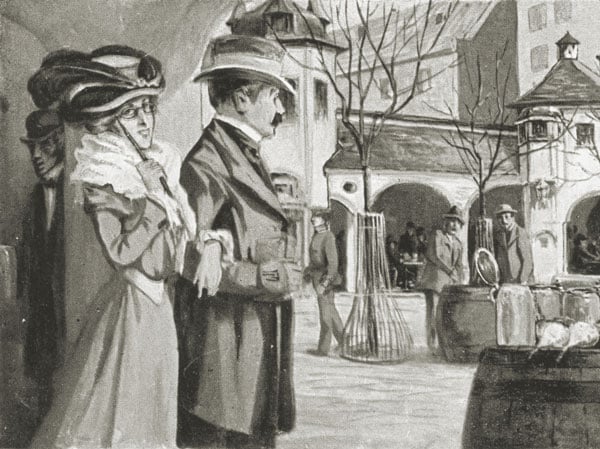
1828 – The Hofbräuhaus at the Platzl hosts publicly
‘O'zapft is!’ (The barrel is tapped!). The Hofbräuhaus am Platzl hosts its first guests. Beforehand, King Ludwig I officially approves the public serving – quite in the interest of his subjects. Thus, even simple
citizens are now able to enjoy the Hofbräu beer.
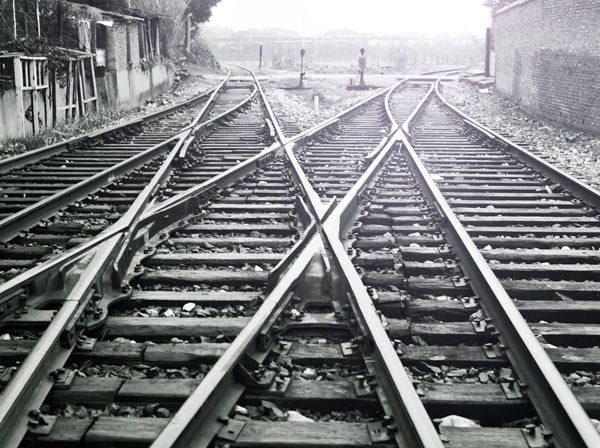
1835 – The first railway line in Germany
…and that’s what else happened in the world
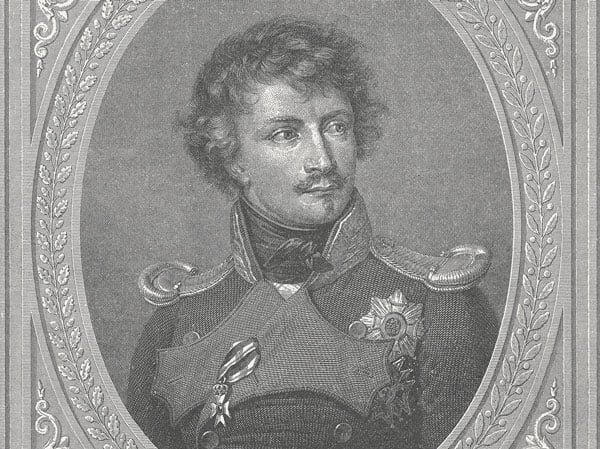
1844 – Ludwig I lowers the beer price
King Ludwig I wants to give “the working class and the military [...] the opportunity to afford a healthy and inexpensive drink." A liter of Hofbräu beer now only costs 5 kreuzer instead of the usual 6½. The result: The beer sales goes up so sharply that the barley juice inventories partially run out of stock.
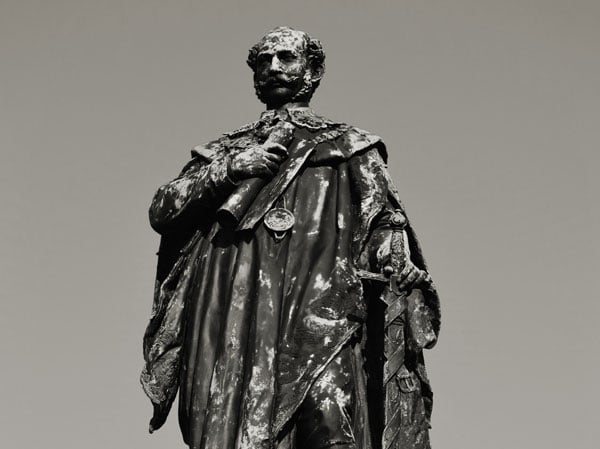
1852 – The Hofbräuhaus becomes the property of the Bavarian state
Success is a double-edged sword: Munich’s private brewers and innkeepers fear for their existence because of the increasingly popular Hofbräuhaus. As King Maximilian II thinks about privatizing the brewery, his people revolt. The solution: The Hofbräuhaus becomes the state property of Bavaria.
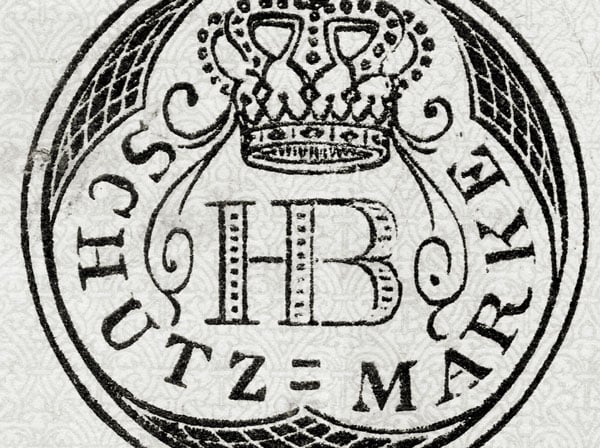
1879 – The Hofbräu signet is protected as a trademark
Caution, forgery! The intertwined letters "HB" with the crown are often and gladly copied. In order to protect the signet of the Munich Hofbräuhaus, brewery Director Johann Nepomuk Staubwasser enters it as a trademark in 1879 and registers it solely for the “company of the Royal Hofbräuhaus in Munich”.
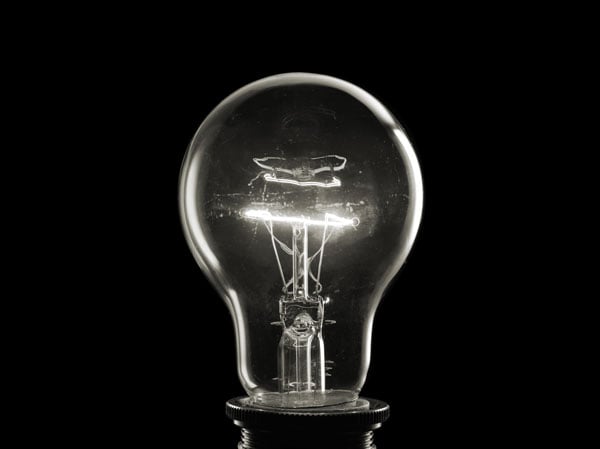
1879 – Invention of the electric light bulb by Edison
…and that’s what else happened in the world
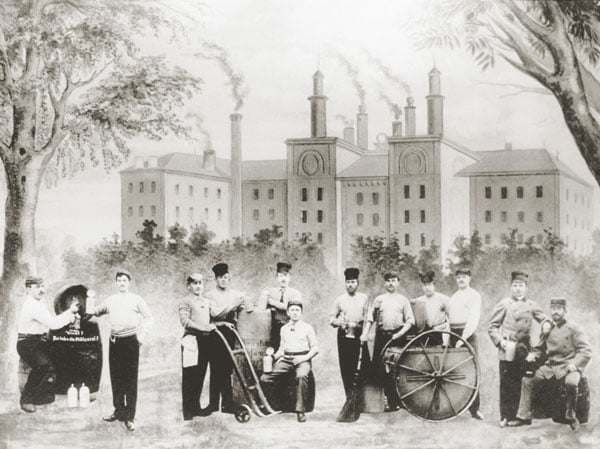
1894-1896 – The brewery moves to new premises at the Innere Wiener Straße
Heavy equipment is in use on the Innere Wiener Straße from 1894: There, a new brewery and cooling house as well as an administration building are established. On May 22, 1896, the brewmaster starts the last batch of brew at the Platzl. Just 70 days later, the brewery operation starts up again at the Innere Wiener Straße.
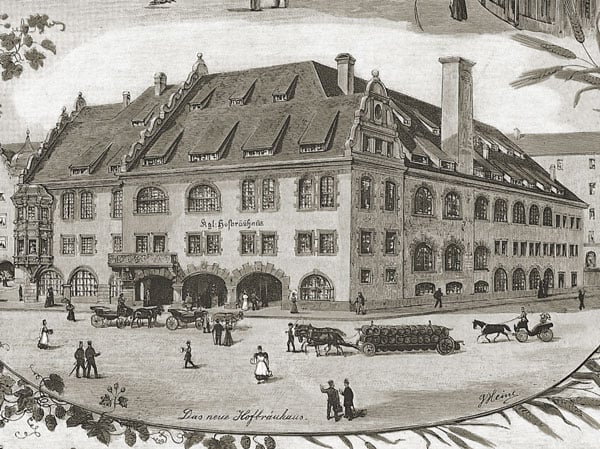
1896-1897 – The Hofbräuhaus is converted and rebuilt
The Hofbräuhaus is becoming more and more a point of attraction for tourists: The Royal Building Authority therefore decides to convert the building into a modern restaurant at the Platzl. Under the direction of architect Max Littmann, the historical beer hall on the ground floor, as well as a private restaurant area are created. On September 22, 1897, Munich celebrates the opening.
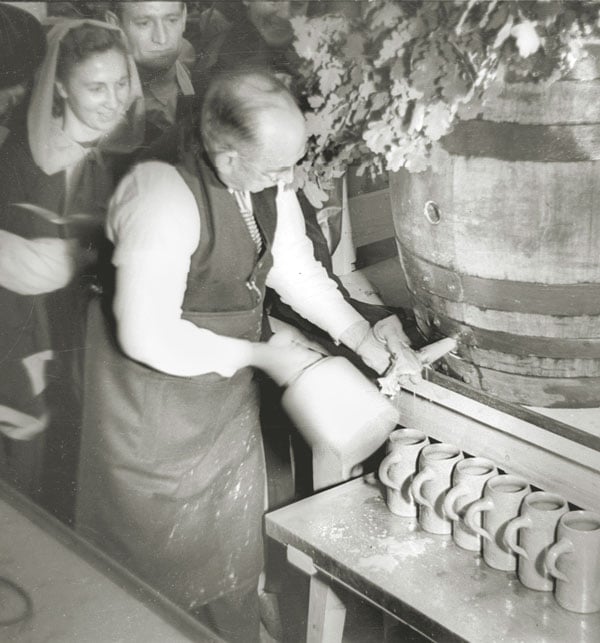
20.
century
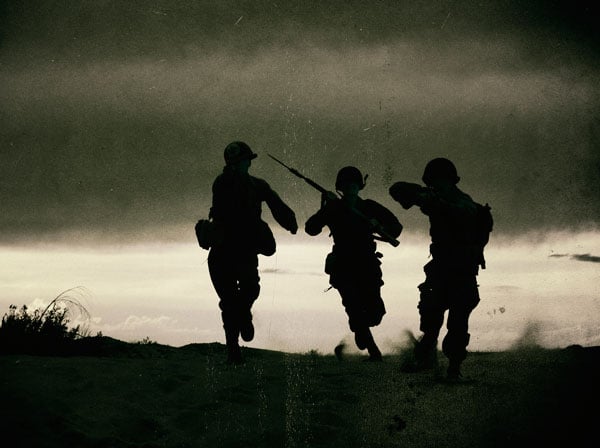
1914-1945 – The First and Second World War
…and that’s what else happened in the world
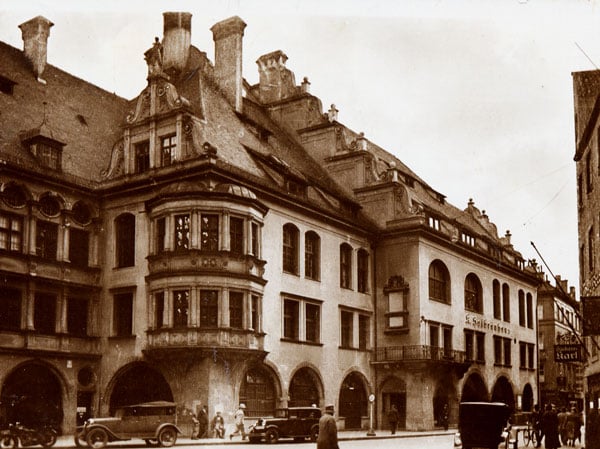
1919 – The Hofbräuhaus is the venue for politics
The Hofbräuhaus, always a place of Bavarian conviviality and joy, is now also a meeting place for events of different political groupings. On April 13, 1919, the Operating and Soldiers’ Council thus declared the Bavarian Soviet Republic in the Hofbräuhaus.
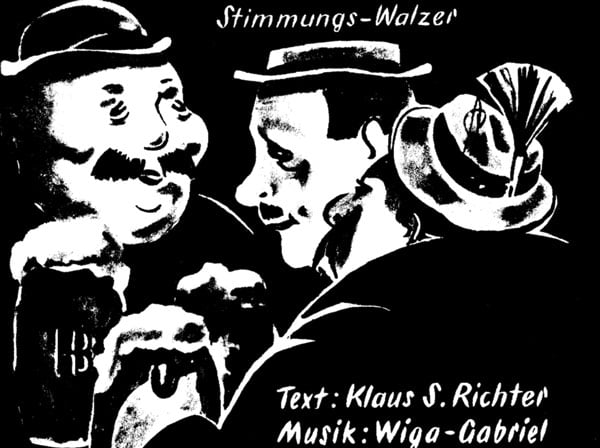
1935 – A Berlin composer writes the Hofbräuhaus song
Hard to believe: The melody to the Hofbräuhaus song by Klaus Siegfried Richter is written by a Prussian, the Berlin composer Wiga Gabriel. The Bavarian brass band performs “In München steht ein Hofbräuhaus – Oans, zwoa, G'suffa!” for the first time at the Dürkheim sausage market in the Pfalz. After a resounding success as a catchy tune during carnival, the song will also soon be sung by the Munich locals. Even today, it is still considered the “beer song” par excellence.
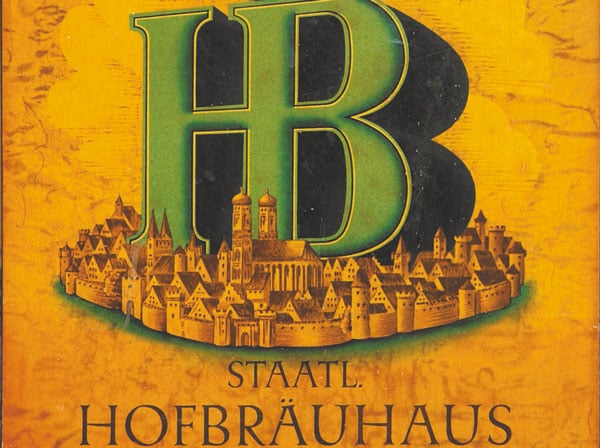
1939 – The “Royal Hofbräuhaus” becomes “national”
The "Royal" is removed from the Hofbräuhaus’ name. Instead, the official title is now the “National Hofbräuhaus”.
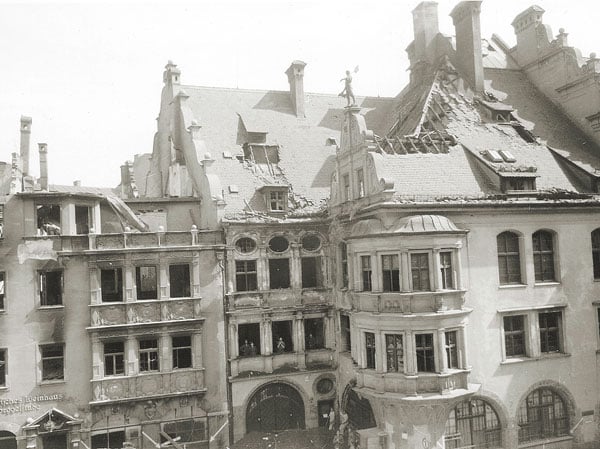
1944 – Aerial bombs destroy the Hofbräuhaus
Munich in ruins: The Second World War destroys 90 percent of Munich's old town and half of the entire city. In April 1944, the Bavarian capital experiences heavy air attacks, and the Hofbräuhaus is also severely hit. Only a small part of the beer hall is left standing.
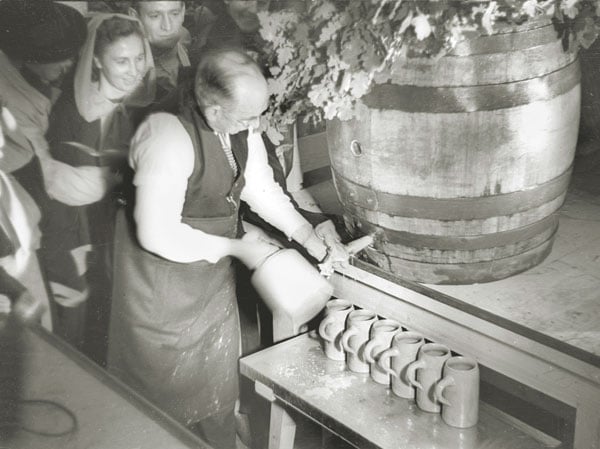
1949-1958 – The Munich residents cannot be beaten down
Very slowly, the day-to-day life comes back to a destroyed Munich. People are starting to look ahead into the future. On September 17, 1949, the first Oktoberfest opens its doors after the war. From 1952 onwards, Hofbräu München is appearing with its own tent. Valentin Emmert starts as the first post-war host with reconstructing the premises at the Platzl, as well as at the Innere Wiener Straße. In 1958, for the 800-year celebration of the city of Munich, the Hofbräuhaus am Platzl presents itself to its guests with a newly refurbished ballroom.
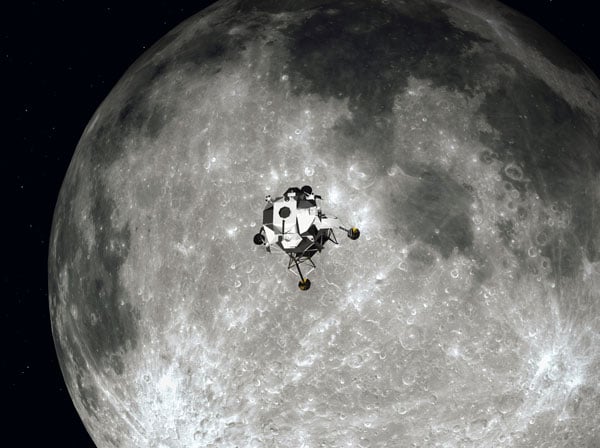
1969 – First man on the moon
…and that’s what else happened in the world
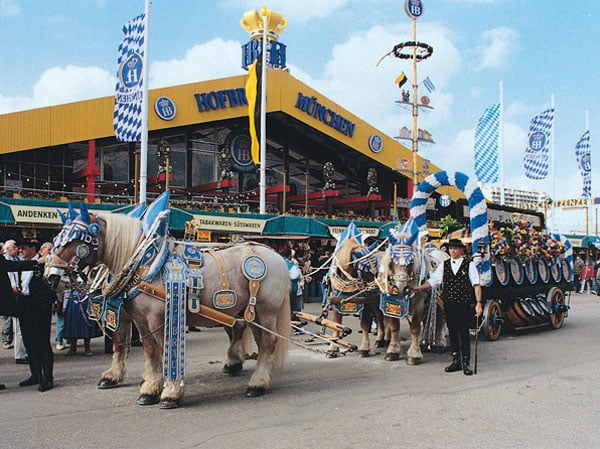
1972 – The new Hofbräu tent sets new standards
82 meters long, 62 meters wide and room for around 10,000 Oktoberfest visitors: The new Hofbräu tent at the Oktoberfest is the largest festival hall in 1972. Under more than 5,000 square meters of tent space and on approximately 2,000 square meters of beer garden, visitors drink around 5,500 hectoliters of beer and consume close to 70,000 portions of roast chicken. Well, then: Enjoy and cheers!
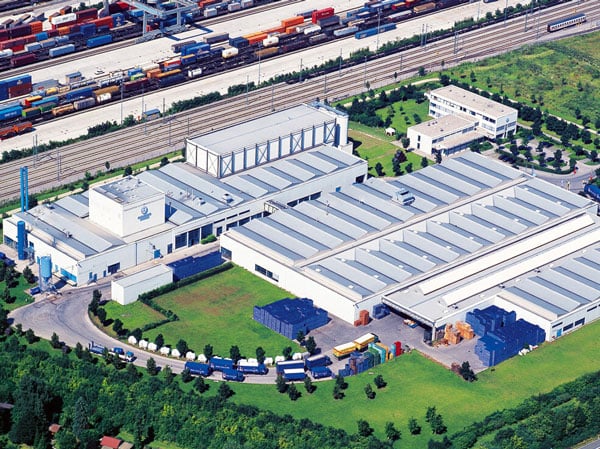
1980-1988 – A new brewery is born in Riem
First plans to relocate the brewery to the edge of the city have been drafted in 1980. On 23 November 1988, the new Hofbräu Munich brewery celebrates its inauguration after a construction period of two years. A separate deep well, optimal access to rail and road and state-of-the-art technology facilities for the brewing plant – the new building is able to produce up to 250,000 hectoliters of “barley juice”, making it one of the most modern breweries in Europe.
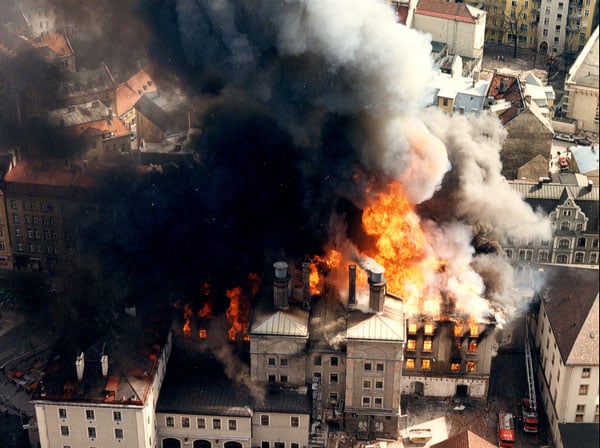
1987 – The malthouse goes up in flames
Large-scale deployment of the fire department in Munich Haidhausen: A fire starts at the malthouse at Innere Wiener Straße. The flames also cross over to the Hofbräukeller , the building is completely gutted by the flames.
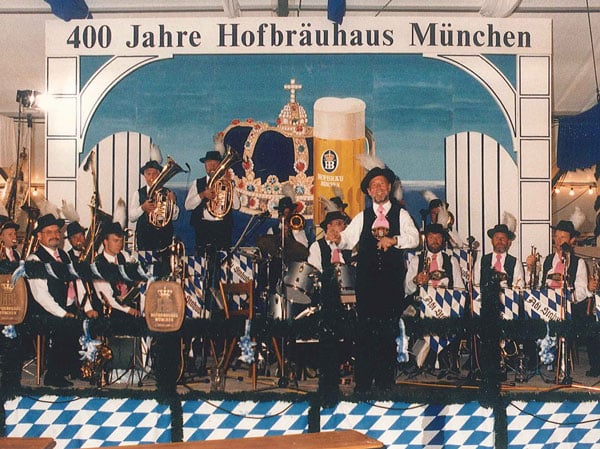
1989 – The Hofbräu Brewery is 400 years old
400 years of Hofbräu, 400 years of enjoying beer with Munich charm: The Hofbräu brewery celebrates its anniversary and looks back on the year of its founding in 1589.

1990 – The world’s first website goes online
…and that’s what else happened in the world
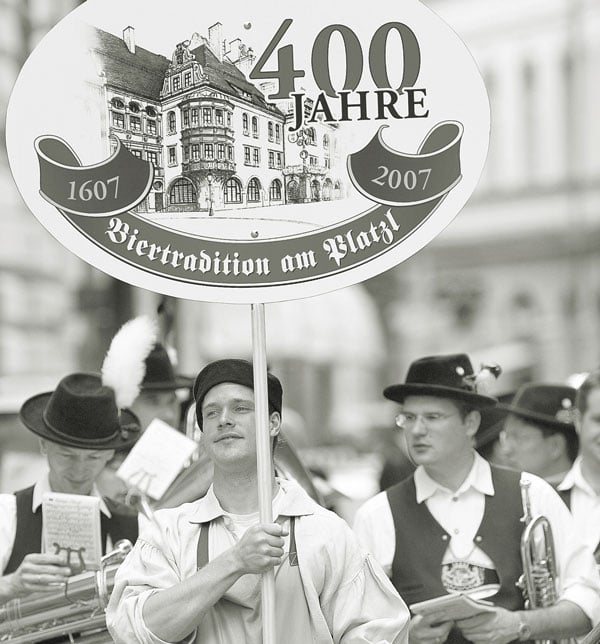
21.
century
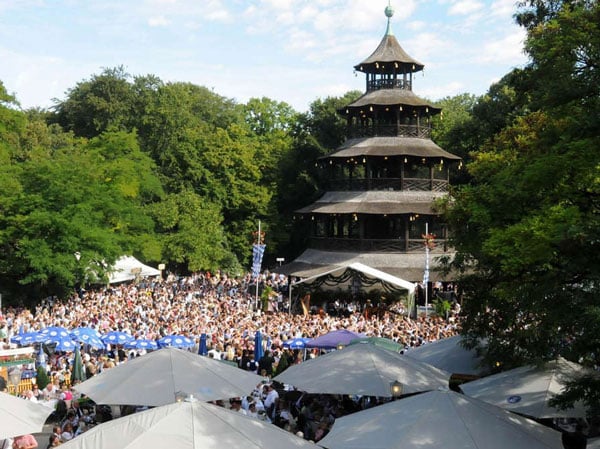
2002 – Hofbräu München supplies the Chinese Tower
In the heart of the English Garden, a meeting place for large and small epicures, for locals, new residents and tourists: No doubt about it, the Chinese Tower is probably the most famous and most beautiful beer garden in all of Munich. Since the beginning of 2002, Hofbräu München has supplied the beer garden and the associated restaurant.
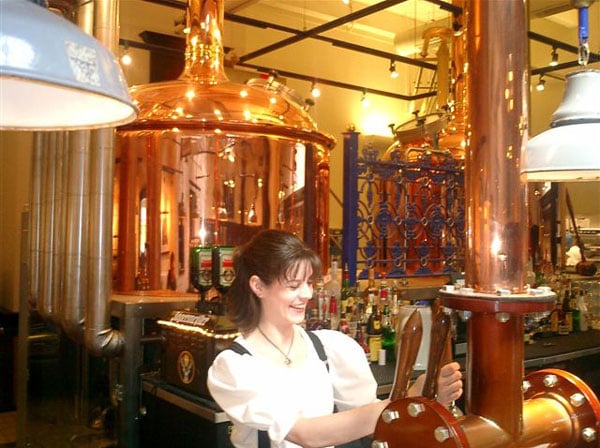
2003 – Hofbräu restaurants open in the USA and China
The Hofbräu concept exports with success: In 2003, the Hofbräu München dares to go across the ‘big pond’ and opens up for the first time a licensed restaurant in the United States. A mini-brewery sets up in Newport/Kentucky in the style of the original Hofbräuhaus. In the same year, the first Hofbräuhaus opens in China. It is located in the city of Jiangyin, in the heart of the Yangtze River Delta.
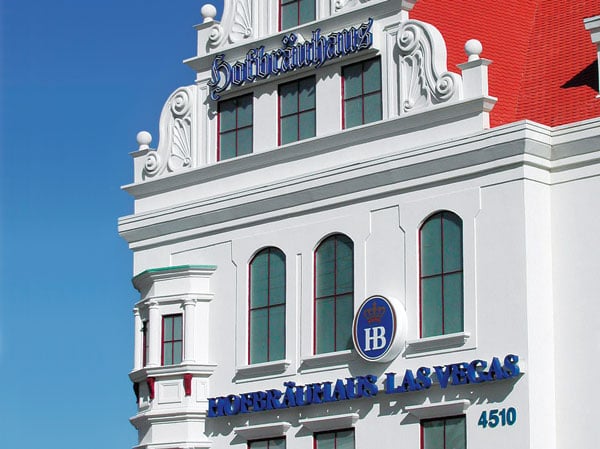
2004 – Las Vegas gets its own Hofbräuhaus
Viva Las Vegas: The entertainment metropolis Las Vegas gains one more attraction. After a year of construction, a true-to-the-original copy of the Hofbräuhaus Munich opens there, in the immediate vicinity of the legendary Hard Rock Cafe.
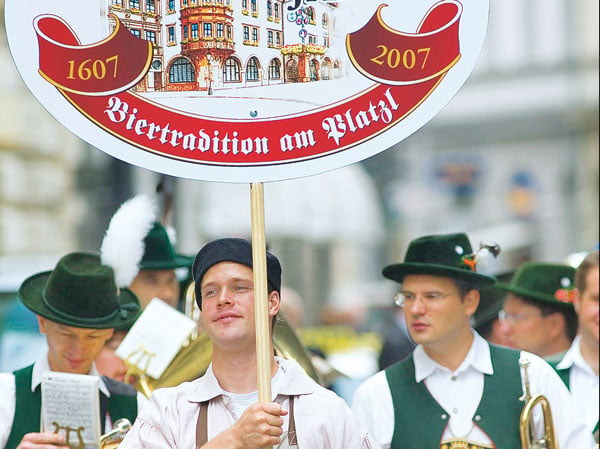
2007 – The Hofbräuhaus am Platzl celebrates its 400-year anniversary
Comeback of a symbolic figure: For the 400-year anniversary of the Hofbräuhaus at the Platzl, the Bavarian Finance Minister, Prof. Dr. Kurt Faltlhauser, presents a symbolic plaster sculpture of the brewery assistant Julius. Until the end of the Second World War, it stood on the north gable of the famous Hofbräuhaus bay. Only a year later, Julius can return as a bronze figure to his rightful place at a lofty 18 meters high.
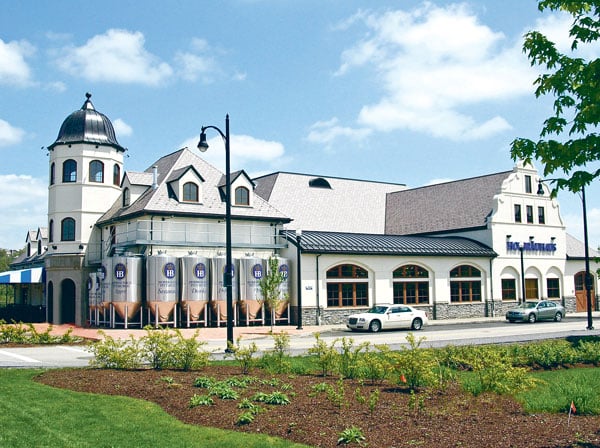
2009 – Pittsburgh, Pennsylvania gets its own Hofbräuhaus
Americans love Bavarian traditions. That this is not a cliché is proven in 2009, when the third Hofbräuhaus opens in the United States: Beer from Munich will henceforth be poured in Pittsburgh, Pennsylvania.
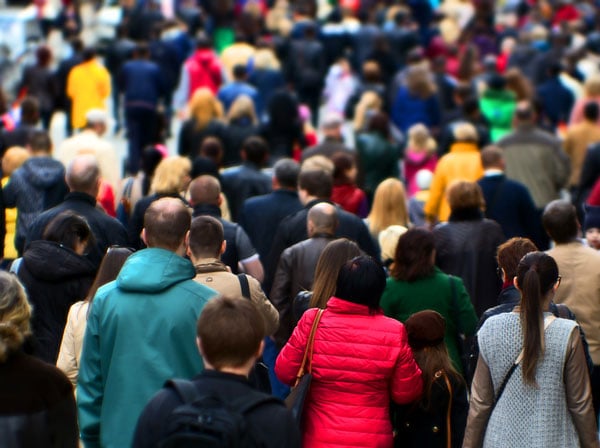
2011 – For the first time, there will be seven billion people on Earth
…and that’s what else happened in the world
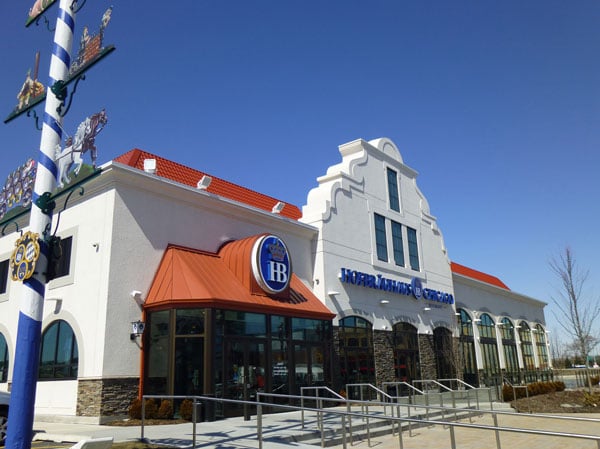
2013 – The largest Hofbräuhaus to date is built in Chicago
Chicago, Illinois sets new standards: In Rosemont, near the American metropolis, the largest Hofbräuhaus to date opens in January. There is plenty of space for American-Bavarian traditions on the 2,500 square meters, whether in the restaurant or in the typical beer garden out front.
Foto: Heinz Hoffmann
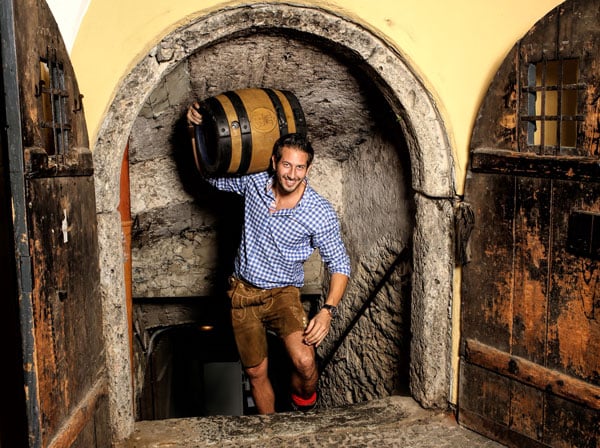
2014 – The “Hofbräu zum Lindwurm” in Klagenfurt celebrates its reopening
Cheers Austria! – In March, the first licensed Hofbräu München restaurant celebrates its reopening in the Austrian city of Klagenfurt. In the guest areas of the “Hofbräu zum Lindwurm”, 130 beer lovers can get together for a cool “Helles”. An additional 100 spaces are available in the cozy beer garden.

2014 – Germany wins the World Cup in Brazil
…and that’s what else happened in the world
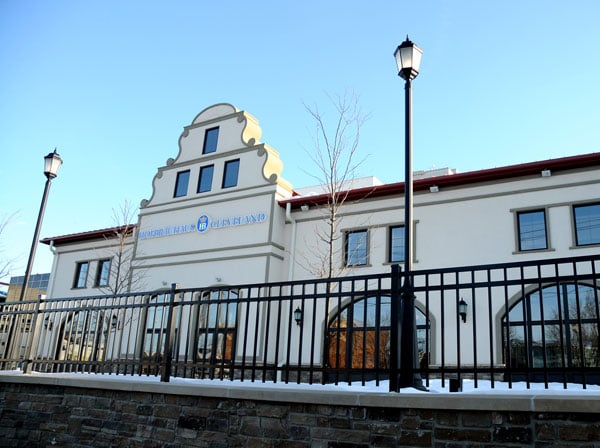
2014 – Hofbräuhaus Cleveland has the largest beer garden in the city
And now there are five! After one year of construction, another Hofbräuhaus opens in October in Cleveland, Ohio, the fifth in the United States. With 3,700 square meters and room for 1,000 guests, it has the largest beer garden in Cleveland.

2014 – Columbus, Ohio gets its own Hofbräuhaus
The second Hofbräuhaus within the State of Ohio, and the sixth in the US: In Grandview Heights, a suburb of Columbus, the first liter of beer flows from the tap in November. The 1,200 guests, which can be seated in the indoor and outdoor facilities, will ask for plenty more.
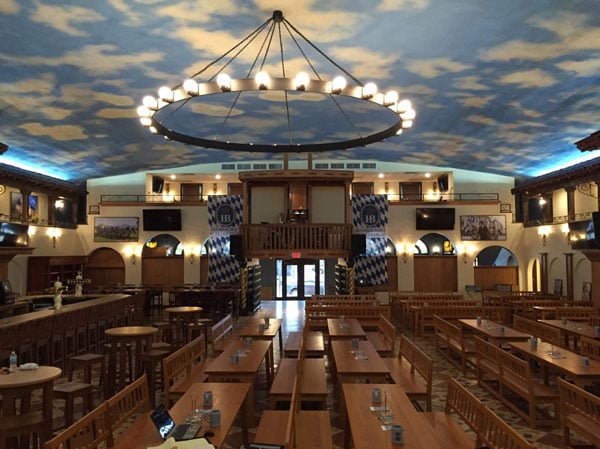
2015 – St. Petersburg, Florida is home to the seventh US Hofbräuhaus
After about nine months of construction is it finally ready: The seventh Hofbräuhaus in the United States opens its gates in St. Petersburg, Florida. On 1,600 square meters, a little piece of Bavaria is recreated in a historic building. Particularly important in the “Sunshine State”: an outdoor beer garden for the visitors.
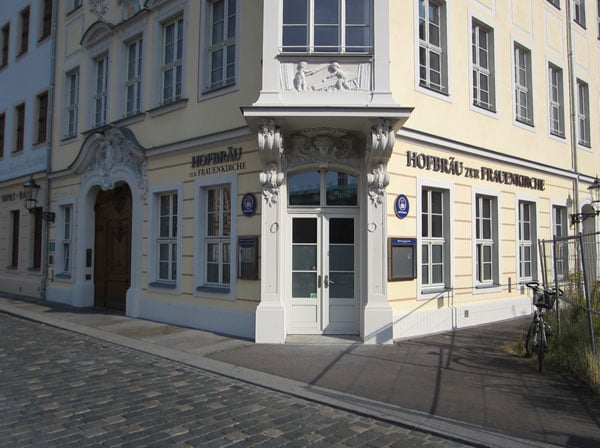
2015 – “Hofbräu zur Frauenkirche” attracts visitors in Dresden’s historic old town.
What a great location! In the immediate vicinity of the Frauenkirche church, the “Hofbräu zur Frauenkirche” starts serving to its guests in October. The inn, which was furnished with great attention to detail, creates a traditional Bavarian atmosphere for its guests by serving hearty delicacies and beer directly from Munich. Easy to get to for a palatable break after an evening of culture and art history in the Dresden city center.
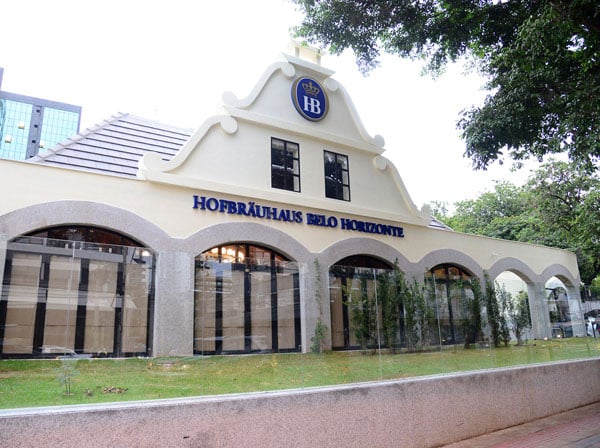
2015 – The first Hofbräuhaus of South America opens in Belo Horizonte
Bavarian flair in Brazil: In Belo Horizonte, an important economic and cultural center of the country, opens the first Hofbräuhaus of South America. Typical Brazilian snacks meet hearty cuisine from Bavaria. In Belo Horizonte, the self-proclaimed brewery capital of Brazil, the Hofbräuhaus can accommodate up to 350 guests.
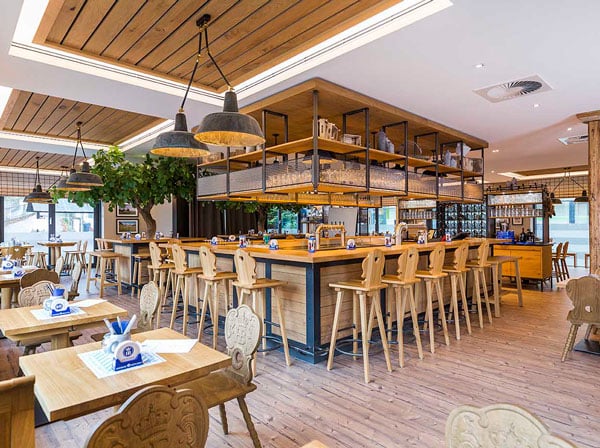
2016 – The “Hofbräu am Ostertor” attracts guests in Bad Salzuflen
Creature comforts may not go amiss in the Kneipp spa resort of Bad Salzuflen: From now on, guests looking for rest and relaxation can enjoy proper pampering in the “Hofbräu am Ostertor” – and combine Bavarian cuisine with cultural discoveries. The restaurant is located directly on the edge of the beautiful old town, just a few steps away from Bad Salzuflens Katzenturm, historic town hall and Salt Yard.
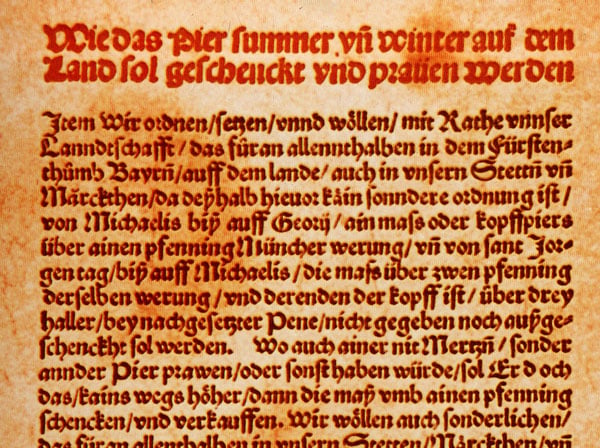
2016 – 500 years of the Purity Law
…and that’s what else happened in the world
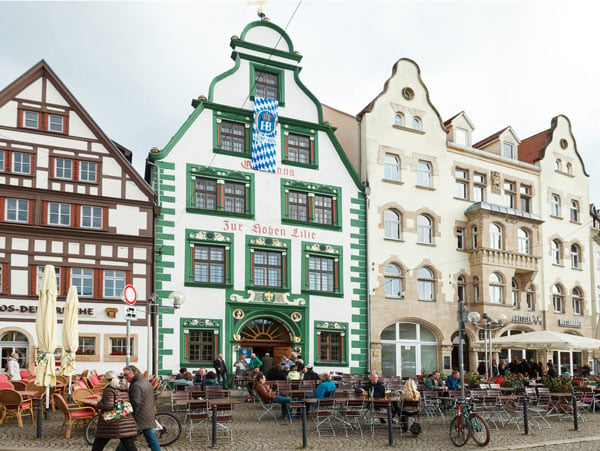
2017 - The "Hofbräu am Dom" offers the most beautiful downtown flair
More tradition is impossible! The "Hofbräu am Dom" opens in April 2017 in one of the oldest taverns in Europe. The Cathedral of Erfurt is only a few steps away and can be admired from the beer garden when the weather is fine.
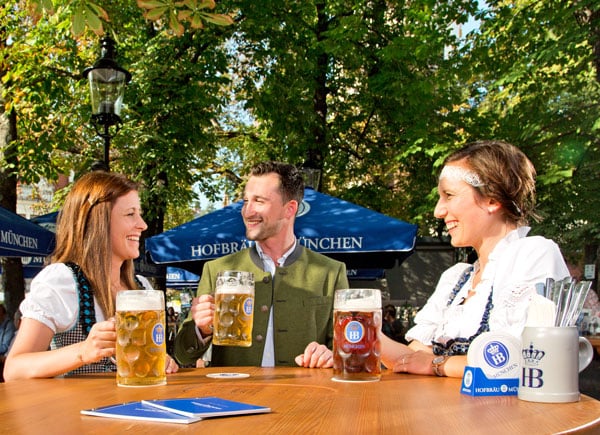
2017 - The "Hofbräu am Steinertor" celebrates its opening
Probably the most beautiful beer garden in Lower Austria. Since May 2017, guests at the "Hofbräu am Steinertor" in Krems can enjoy a cool beer under shady chestnuts and even tap it themselves. Of course there is also the view of the Steinertor - the landmark of the city. And inside, guests can also experience the Hofbräu feeling up close.
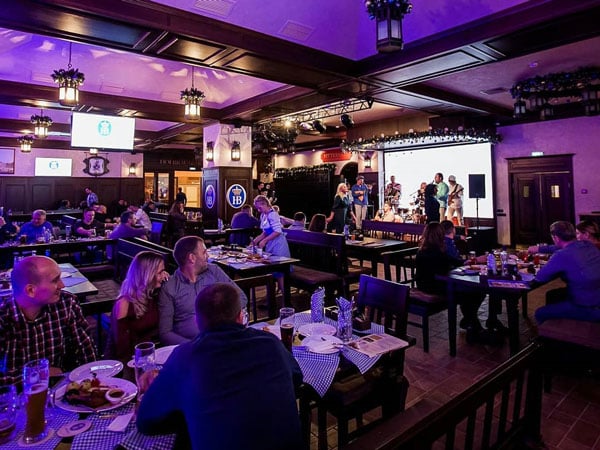
2017 - "Hofbräu Kemerowo" becomes the first Hofbräu restaurant in Russia
And now also in Russia: In December 2017, the first Russian Hofbräu tavern opens. The "Hofbräu Kemerowo" brings Bavarian cosiness to the west of Siberia.
